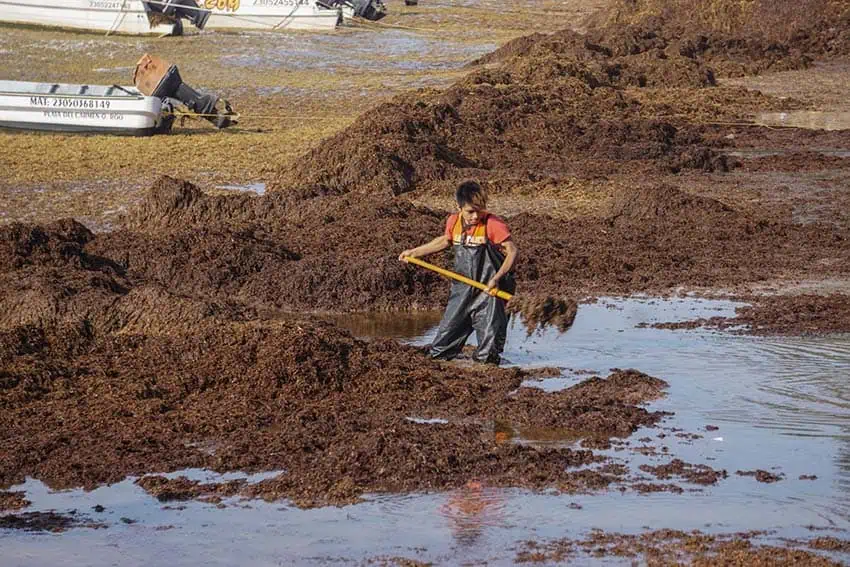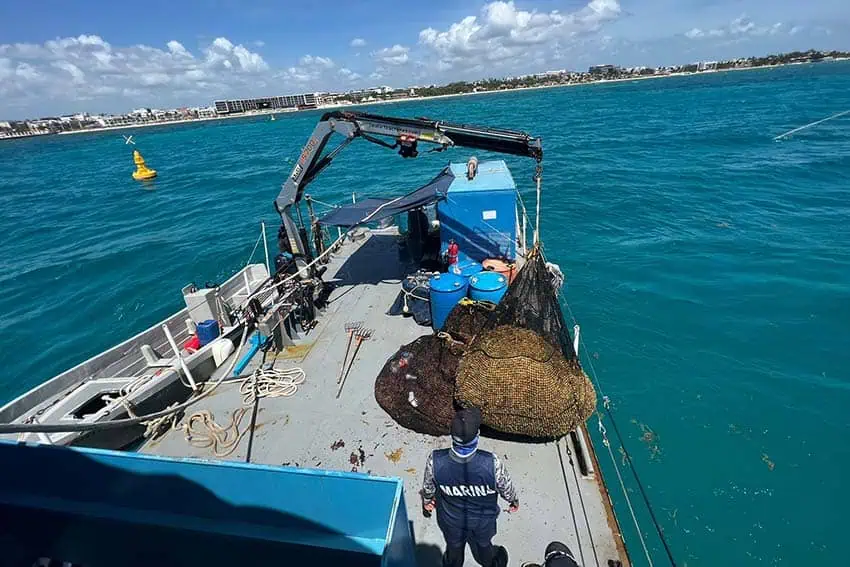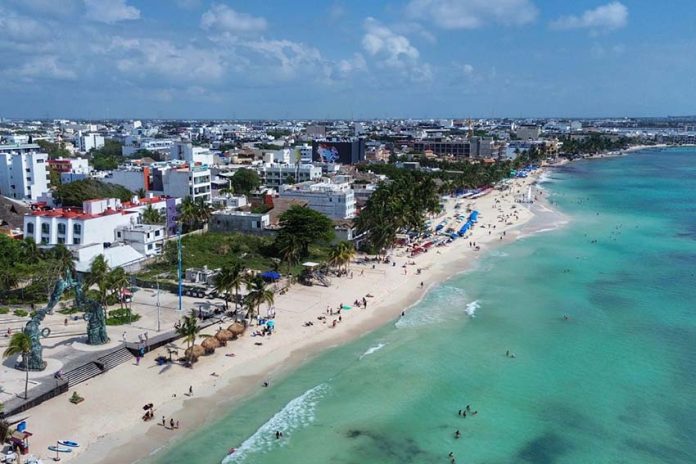The Mexican Navy (SEMAR) has issued a Level 2 sargassum alert for Caribbean coastal areas for the first time this year.
Sargassum — a type of floating brown algae that provides food, protection and habitat for many marine species — can adversely impact coastal ecosystems, tourism and public health when it’s carried by wind and currents near shorelines, a phenomenon known as an inundation event.

The U.S. National Oceanic and Atmospheric Administration (NOAA)’s Sargassum Information bulletin says that massive inundation events can form brown tides near to shore, smothering fauna and flora — including coral reefs.
Sargassum also contains high levels of arsenic and other heavy metals, organic contaminants and marine debris. When it decomposes on the beach, it produces hydrogen sulfide, a gas that smells like rotten eggs. In addition to being unpleasant for tourists, it can cause respiratory irritation.
SEMAR issued the Level 2 alert after detecting an approaching mass of free-floating sargassum that could reach Quintana Roo’s beaches in the next four days. The Navy said that the mass’ front wave has already washed up on shores from Punta Herrero to Playa del Carmen.
SEMAR estimates 120 metric tons of sargassum are headed toward Mexico’s Caribbean coast, saying that Playa del Carmen, Cozumel and Tulum’s beaches will likely be affected.
SEMAR’s alert had been steady at Level 1 since last year, although the newspaper La Jornada Maya reported that SEMAR has collected 950 metric tons of sargassum already this month.
In January, the civilian group Sargassum Monitoring registered a nearly 5-million-ton sargassum mass moving westward in the Atlantic that had the potential to hit Mexico with record levels starting in April or May.

Thus far, however, 2024 has been a lower-than-average sargassum impact year. According to the newspaper The Cancún Sun, this has delighted tourists, “as well as local officials who have to pay for the removal and disposal of the microalgae.”
Most of the popular tourist beaches were nearly sargassum-free during the recent peak spring holiday travel season, the Cancún Sun added.
April through June is considered the peak period for sargassum inundation events, and SEMAR is in the process of installing 8,650 meters of floating offshore barriers to catch the algae. Underwater anchors that will hold the barriers in place have been implanted off the coast of the Quintana Roo beaches.
In addition to the anti-sargassum barriers, four beach sweepers, 22 small vessels, 11 seaweed collectors and eight amphibious bands will be used to combat the stinky brown mass, according to news agency Travel Pulse.
Tourists are urged to observe the flag color on their beach and to consult with lifeguards regarding safety conditions when sargassum is present in the water and onshore.
With reports from Sipse, The Cancún Sun and La Jornada Maya
